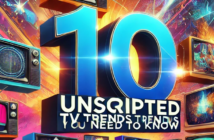Photo: Mad Men’s fan-made Twitter accounts are a prime example of user-generated transmedia
« The Age of Broadcasting is slowly coming to and end. In its place, we are entering the Age of Communal Storytelling paired with Instant Feedback » – Jeff Gomez, SWC11
There was a congregation of storytellers, lawyers, researchers, publishers, designers, marketers and producers in the sunny city of San Francisco over Hallowe’en for the Storyworld Conference and Expo (SWC11). They all had one theme in common: transmedia storytelling. If you’re stumbling over this term for the first time, you can find out more here or here, but for now I’ll just assume you know what I’m talking about: telling stories over different media, connected in plot terms, but not replicas.
The talks and the sessions were many and varied, looking at transmedia from the angle of constructing storyworlds, of developing narrative structures and designs, of getting the money to produce transmedia, of managing communities and creating characters and much more.
Looking at the transmedia talks going on and putting them into the context of the world of television and formats, some things stand out clearly.
The audience of any given television show, be it drama, documentary, reality or game show, can be expected to engage in social media activities before, during and after a broadcast if the content is engaging enough, so there is an interaction going on. Increasingly, any audience is also expecting there to be more to take part of, be it via PPV, VOD, online web portals, mobile content, social media or even live events.
The use of transmedia methods of storytelling is a powerful tool for any creator or development team when it comes to maintaining the oh-so-ever important consistency of a story over multiple platforms. Not every production will bask in the luxury of having devoted fans managing the social media profiles of the show’s major characters in such a consistant and loyal manner as the fan-created Twitter accounts of the main characters of Mad Men.
This, in and of itself, is one of the traits of transmedia storytelling: an increasing acceptance and recognition of the audience as not merely recipients of a story, but as co-creators in their own right. Even though this is an aspect that can feel like an unnecessary risk, the fact is that this creative work happens whether the broadcaster or producer wants it or not; on social media, on blogs, on YouTube and so on.
”The cost of creating content is going down, but the cost of distributing content is going up.” – Jordan Weisman, SWC11
I believe one result of this is that we will see the methods of measuring TV ratings evolve. As in marketing, we need to measure what impact content has on the social graph, as well as how it is being consumed through all possible distribution platforms – including pirated versions — in an even more brand-sponsored future.
In the light of this, it makes more sense for the producer to have a well-developed transmedia strategy in place from the outset — offering the audience the necessary tools, hashtags and story facets to interact with and build on — the audience creating with you instead of despite you. That said, interaction is never a must when talking about transmedia storytelling; just like any other platform, a good transmedia strategy will incorporate User Generated Content when it makes sense in the context of the story/franchise.
There is a lot of great write-ups from the Storyworld on different blogs, such as this and this. I strongly recommend everyone who is involved in the television industry to familiarise themselves with the talks that were going on in San Francisco – it is good food for thought.
Simon Staffans is a format developer for Media City Finland and a regular contributor to MIPBlog.





4 commentaires
Pingback: Simon Staffans: Transmedia audiences are co-creators, not just spectators | WCN TRANSMEDIA GROUP
Pingback: Webisode n°8: Hyperlinks Storytelling 2010-2012 » Transmedia Ready, KH c/o Owni.fr
Pingback: Webisode n°8: Hyperlinks Storytelling 2010-2012
Pingback: Cyber Review 2010 – 2012